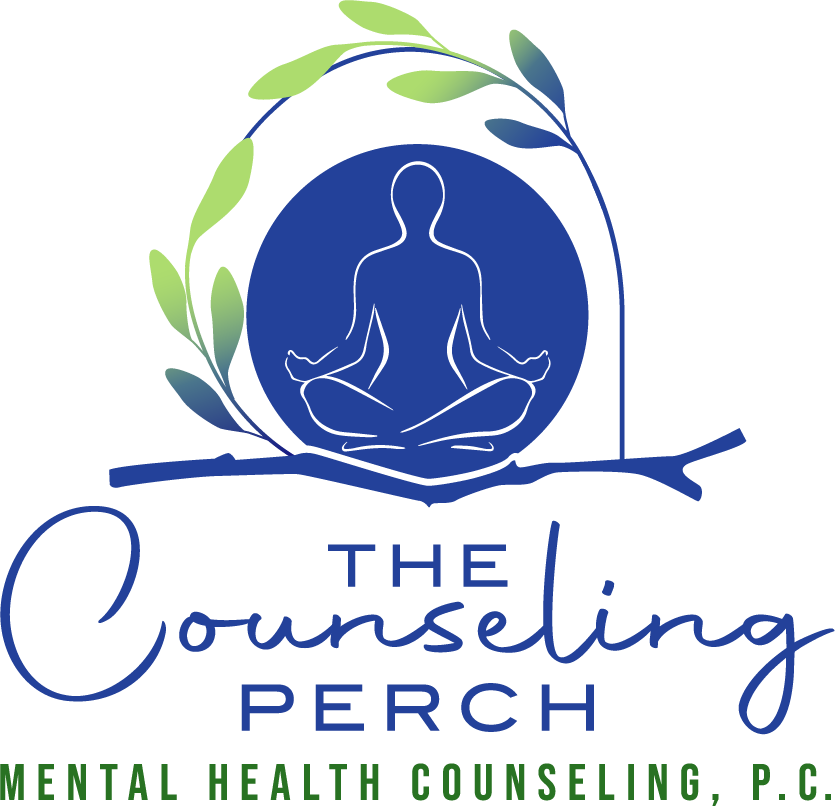Reassurance Seeking Anxiety
Many people find themselves in a cycle of reassurance seeking anxiety when dealing with uncertain life circumstances. In this cycle, looking for comfort and soothing support from others becomes a primary way of managing stress.
What is Reassurance Seeking & How Does it Relate to Anxiety?
Reassurance seeking is a behavior that is aimed to gain information, feedback, or other helpful cues to increase confidence. People typically seek reassurance in situations that seem dubious, complex, concerning, or stir up feelings of uncertainty or worry.
In reassurance seeking, there is a yearning for affirmation, confirmation, validation, encouragement, and any other comforting, guiding references.
For instance, imagine a young child that is playing in the yard and has fallen. Feeling shocked and upset, the child may first look to their parent for assurance. The child may wonder whether or not it’s ok to get back up and what the assessment of their injury is.
These answers may be readily available to the child. For example, they gently fell on cushy green grass, don’t have any cuts, don’t have any pain, etc. But in a situation of shock, uncertainty, fear, anxiousness, the child relies on the parent for answers.
Therefore, reassurance seeking is looking for information about what to do and how to feel. The hope is to receive support and comfort that boosts confidence and relieves doubt. In this way, reassurance seeking behavior is positive and beneficial.
We can gain a motivating push to do new things and feel calmer in uncertain situations. However, when feeling anxious, there can be an increased tendency to heavily rely on constant reassurance. This can have a mix of positive and negative consequences.
Information Seeking Vs. Reassurance Seeking
The difference between information seeking vs. reassurance seeking is the intention of the behavior. If there is a question or problem that needs solving, a natural inclination may be to seek information.
Therefore, the intention of information seeking is to gather information needed to answer the question or solve the problem. You can seek information from your own knowledge base such as your previous experiences or memory. But, you can also seek information from an outside source.
Once the adequate data is located, your search is ended. You are then able to utilize the information you found for whatever purposes you need.
With reassurance seeking, however, the intention is to soothe and ease uncomfortable feelings or sensations of anxiety, worrying, and uncertainty.
The goal is very different because the intention here is to manage and regulate one’s own inner feelings. And much less about gathering data to solve a problem.
Reassurance Anxiety

In the case of reassurance anxiety, there is a strong need to seek outside sources to control anxiety symptoms.
Anxiety symptoms include frequent worrying, overthinking, difficulty controlling worrying, trouble concentrating, muscle tension, irritability, heart racing, nervousness, trouble relaxing.
When anxiety takes hold, there is much worry and fear about the future and what is going to happen. There is a deep concern about things going wrong and this can feel very scary.
It is sometimes difficult to deal with these emotions alone. Indeed, many people that seek constant reassurance to control anxiety symptoms struggle to rely on their own sense of confidence.
There is often a fear of trusting one’s own thoughts, opinions, feelings, and abilities. There is a fear that relying on one’s own perception and understanding of the situation may not be good enough.
The potential for error, mistakes, poor choices, and feelings of embarrassment, insecurity, self-doubt, hesitance, confusion, apprehension seem insurmountable. And so, there is a belief that utilizing a reference point outside of oneself is going to yield the best results.
Seeking support, validation, and confirmation from elsewhere somehow helps to temper these difficult and complex emotions. For this reason, many people with reassurance seeking anxiety spend a great amount of time and effort consulting with other people and resources.
This may mean searching through various internet search engines and websites. It could be scrolling on various social media platforms. It could be asking several people about their thoughts, opinions, and perspectives.
Reassurance for anxiety is motivated by the intention to reduce feelings of self-doubt, fear, confusion, and apprehension. Once comforted, the anxious person experiences a temporary boost in confidence and creates a sense of calm.
Reassurance Seeking Examples
What does reassurance anxiety look like? It takes the shape and form of many different behaviors. Below are some examples.
Asking Questions
Asking questions that specifically help to soothe or calm unnerving feelings or sensations. This may involve asking the same question to various different people or asking the same question to the same person several times.

The reason to ask different people the same question may be to see if anyone gives a response that you haven’t yet considered.
Another reason may be to gauge if other people will say the same response that you came up with.
Both reasons serve as a way to let you know if you are on the correct path with what you are thinking.
Or it could be to help resolve feelings of indecision, dissonance, self-doubt, or uncertainty.
Furthermore, in many situations you already know the answer but want to double-check, just in case.
For example, imagine that you are going to purchase a new car. You are unsure if you want to change models but think you would like this. So you embark on information seeking and do your due diligence to learn about the car and its features and price.
You decide it’s within your budget, can make the purchase, and believe you do need new car sooner than later. But, the anxiety to make a change is too high and leads to overthinking and not feeling entirely sure anymore.
Instead of relying on your own reasoning for a new car and using the information gathered to ensure you are making an appropriate decision, you ask others.
Each time seeking confirmation and validation that you are doing well with your decision. Thus, reducing fear that you are making a mistake.
Some people will seek reassurance for anxiety by asking the same person the same question repeatedly. For example, asking a friend if they are upset with you several times, even after they confirmed that they are not.
But, because you feel anxious, any change in their behavior towards you sparks up feelings of concern and worry. So, you ask again, perhaps each time they appear distant, just to make sure.
Seeking Certainty
Seeking certainty is one of the hallmarks of reassurance seeking. It means not letting go of a particular topic or question until you know for certain or for sure.
In order to get closer to knowing for sure, people will spend an enormous amount of time and resources searching for answers that will satisfy and reduce anxiety.
When dealing with reassurance anxiety, the hope is that by drilling down enough, and seeking enough validation as possible, that there will somehow be a way to increase one’s feelings of certainty.
This is unfortunately not always the case. And this is often an unsettling discovery because the truth is that we cannot always know things for certain.
Many things in life live in the gray area. Meaning that there is no clear-cut or specific right or wrong answer. There may be a best and better option. But, there is never a guarantee.
Seeking certainty by asking questions, getting information from the news, media, friends, internet, etc. give a false sense of security. In reality, we can never know something one hundred percent for sure.
Difficulty Making Important Decisions On Your Own
Reassurance seeking when making important decisions can be helpful in many cases. Overall, it is beneficial to consult with supportive people that can provide guidance, advice, or tips.
On the other hand, it can be detrimental if other people’s voices and choices take precedence over your own. Because people give advice based on their own individual perspectives, they may not fully estimate how the outcome of a decision will impact you.
This may lead you to inadvertently trust someone with a decision that in the end, leaves you feeling dissatisfied or disappointed.

Furthermore, by relying on another person to influence your decision-making process, you are passing on personal responsibilities to care for yourself.
Sometimes it is hard to know whether or not you are doing the right thing. Is your decision going to work out or not?
But, making the decision for yourself without relying on another person gives you opportunity to find out.
Whatever the outcome, you learn to take accountability and learn to manage and take control of the situation.
Utilizing constant reassurance in the decision-making process can mean you are putting the accountability on others.
If it doesn’t work, then it wasn’t really you that decided. It was the other person. It somehow reduces feelings of anxiety, shame, and guilt that accompany knowing that you’ve made poor choices.
If you always check with another source before making a decision, you are engaging in reassurance seeking behaviors.
Low Self-Esteem or Low Self-Confidence
Low self-esteem and low confidence are connected to reassurance seeking behaviors. It is possible that when we feel good, secure, and sure of ourselves, we rarely need to seek external validation.
There is an inner peace that we know and trust ourselves to believe and respect our own thoughts, opinions, and inner experiences.
When we feel assured and secure in ourselves, we rarely need for another person to confirm, encourage, or praise us. Therefore, reassurance seeking is also an example of what occurs when we feel a less confident.
What About Reassurance Seeking OCD?
Reassurance seeking behaviors are very common in people with a diagnosis of Obsessive Compulsive Disorder (OCD).
Symptoms of OCD include obsessions and compulsions. Obsessions are intrusive and persistent thoughts that enter the mind and cause distress. For many people with OCD, there are many thoughts that are intrusions and cause anxiety or feelings of uncertainty.
For example, a person may have an obsessive thought about whether or not they locked their front door. They may ask a family member they live with several times if they have locked the door. The intention is to double-check and reduce potential risks associated with safety.
This on its own is not a problem as it is good information to have. Especially, if the person has left the house for the day to go to work. Double checking to make sure would ease this feeling of uncertainty or concern.
But, in OCD, the obsession or persistent intrusive thought about whether or not the door is locked causes great distress. And obsessions enter the mind several times to hundreds of times in one single day.
This means that feelings of anxiety, uncertainty and needing to know for sure also come up each time the intrusive thought does. Therefore, a person experiencing OCD symptoms may then ask for reassurance each time in an attempt to calm the discomfort.
In this way, reassurance seeking behaviors in OCD become compulsions. Compulsions are behaviors that are performed in order to reduce anxiety or distress associated with intrusive, obsessive thoughts.
This compulsive behavior of consistently checking and seeking confirmation, certainty and reassurance temporarily reduces the distress. But, it doesn’t provide a long-term relief.
Is Reassurance Seeking Bad?
Research on anxiety treatment and OCD show that reassurance seeking is not helpful as a long-term solution. It can also make anxiety worse or prolong feelings of discomfort.
How Does Reassurance Seeking Maintain Anxiety?

Moreover, reassurance seeking maintains anxiety symptoms. This is because it provides temporary relief, giving the impression that it is effective. But, the results are short-lived.
Soon enough when another concern or worry comes up, the symptoms will also return. Therefore, a person gets into a cycle of seeking momentary relief instead of figuring out the root cause of the anxiety.
Avoiding getting to the root cause of anxiety and delaying seeking anxiety treatment will sustain and maintain anxiety symptoms.
In other words, avoidance and reassurance seeking behaviors keep the anxiety at bay. But the real reasons causing the anxiety are never explored and addressed.
When anxiety is left untreated, it can lead to chronic anxiety disorders. And a person can suffer for a long period of time trying to manage anxiety symptoms on their own.
So, while reassurance seeking, in moderation isn’t bad per se, there are consequences that arise. This is especially true when a person is needing constant reassurance to control anxiety symptoms.
Consequences of Reassurance Seeking Behaviors
Creates Dependence on Others to Manage & Regulate Your Inner Emotions
Seeking support and comfort from others is a healthy coping strategy. But, it can become harmful if you rely solely on other people to help you manage your own inner experiences. It makes it harder to practice and implement effective coping skills and techniques.
Moreover, there is no guarantee that your support system can be there during a moment of need. Many people that rely on external sources for emotional regulation will often experience distress in their absence.
Decreases Sense of Individuality, Trust, & Belief in Your Abilities
You can begin to second guess yourself and choose to follow what others believe vs. your own personal thoughts. This washes away your own sense of self, individual ideas, values, and opinions.
It also reduces your creativity and opportunities for self-growth and advancement. You learn a lot from trying things on your own. This is a necessary process to build your self-confidence and your skills.
It is also necessary and helpful to take calculated and healthy risks in life. What you learn from these experiences propels you forward in the direction of personal development.
If you seek constant reassurance, you rob yourself of the opportunity to test, expand, strengthen, and trust in your abilities. It also reduces chances to increase resiliency.
Increased Confusion When Receiving Conflicting Opinions & Advice
Sometimes getting conflicting opinions and advice from various different people can actually dampen your own sense of confidence. You know the phrase, “too many cooks in the kitchen?”
There are moments where having too many people give you assurance and advice can do more harm than good. Having too many options to pick from unexpectedly increases confusion and stress.
Doesn’t Allow You to Evaluate & Practice Effective Coping Strategies
It could be that you have been relying on constant reassurance as the first method of managing anxiety. But, managing anxiety is really an individual process that is specific to you.
The only way to learn what works for your type and level of anxiety is to practice different self-soothing and relaxation techniques. By allowing yourself to explore several strategies over time, you will most likely discover something more effective for reducing anxiety.
Negatively Impacts Relationships

Reassurance seeking anxiety can also negatively impact relationships. This is because the person seeking reassurance may be heavily reliant on the person providing the support.
This can at first appear to work well when the reassurance seeking behavior is infrequent. After all, many people in the reassuring role are happy to help and want to see you feel better.
But, when the need for constant reassurance is present, it can create pressure and tension in the relationship. The relationship dynamic changes because the supportive person has a new role to consistently help their partner regulate their emotions.
Over time, the supportive person may struggle with offering consistent support and encouragement. For example, the supportive person may not always have all the answers. They may not know the best thing to say or how best to assure you and guide you.
In addition, they may also not be in agreement with you and maybe don’t want to offer encouragement or praise. But, feel pressured to do so.
In some cases, this can cause arguments or conflict within the relationship. Eventually, taking a toll on both persons.
How to Stop Reassurance Seeking Anxiety
Finding ways to stop reassurance seeking anxiety can prove beneficial to overall management and reduction of anxiety symptoms. The best way to go about this is to meet with an anxiety therapist and find support.
Coping With Constant Reassurance Seeking
However, if you are not ready to meet with a licensed mental health professional, you may consider some of the following:
Practice Self-Compassion
Self-compassion refers to the act of being kind and gentle with oneself when going through difficult life moments. Instead of judging yourself for having anxiety symptoms, take a quiet moment to yourself.
Acknowledge that the need for reassurance often shows up in moments of suffering. Practice speaking to yourself kindly or doing something that feels comforting and self-soothing. This is a way of meeting the anxiety or stress you experience with compassion rather than judgment.
Build Self-Assurance & Self-Esteem
Self-assurance refers to having internal confidence in your own self. This means that you rely on your own thought, opinions, intuition, and feelings to guide you. In essence, you have confidence in yourself.
When you can confidently commit to following your own thoughts and belief system, you are much less likely to use reassurance seeking.
Learn to Trust & Believe in Yourself
Chancesare you that deep down you know the answers to the questions you are seeking reassurance for. The issue may actually be that you don’t fully trust and believe in yourself.
Perhaps feelings of self-doubt have entered your life from previous negative experiences or traumas. Maybe you have made mistakes in the past and don’t believe you know how to make good choices today.
While these feelings are valid, a pattern of negative thinking can keep you stuck in reassurance seeking anxiety. Practice catching yourself when you are thinking that you can’t do something.
In addition, practice recognizing when you are handing the reins over to someone else to make decisions for you. It could be that you seek reassurance from this source because you believe that they know better.
But, you know yourself better than anyone else. You know what makes you feel healthy, positive and happy. You know what makes you feel sad, down, and downcast.
And if you don’t find that that this is true, then it is possible to practice self-awareness exercises and get to know yourself better.
Taking the time to develop an increased understanding of yourself will help guide you toward self-trust. You can also engage in activities that will help you to build belief in your capacities and inner strengths.
The more often you practice believing and trusting yourself, the more likely you are to discover that you are doing better than you think. You can begin relying on yourself a little bit more.
Engage the Mind in Pleasurable Activities
Focusing on worries and anxiety can leave you feeling exhausted. When you notice yourself feeling preoccupied with uncertainty, it is reminder to start engaging your mind in a pleasurable activity.
This can be exercise, a hobby, journaling, watching tv, playing with a pet, talking with a friend, doing a craft project, etc. The goal is to do something positive that allows you to redirect your mind anxious thoughts.
In essence, doing pleasurable activities is a direct alternate behavior that replaces reassurance for anxiety. And these activities will have a more positive effective on relaxation and anxiety reduction.
Therapy for Reassurance Seeking Anxiety in Rockland County, New York
Therapy for anxiety, reassurance seeking, and managing stress is available. Consider scheduling an appointment with a therapist in Rockland County, NY. Serving all of New York State.







